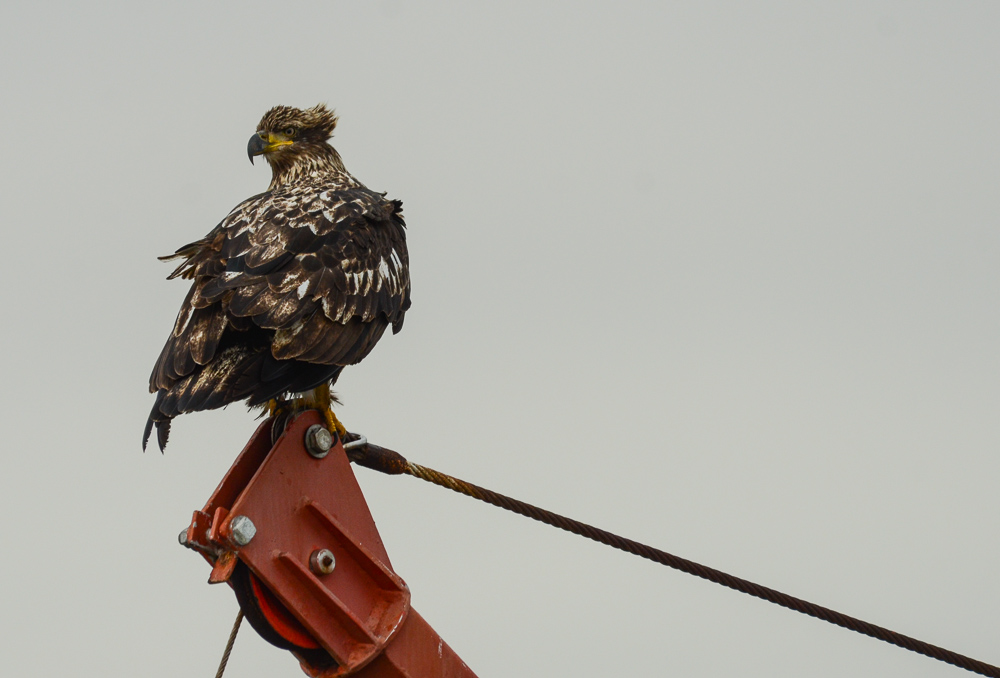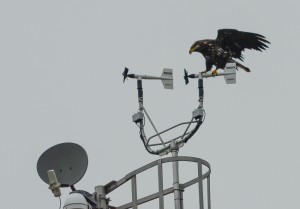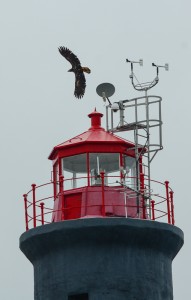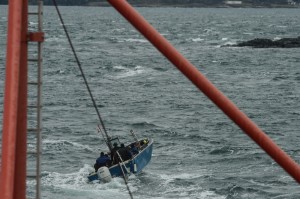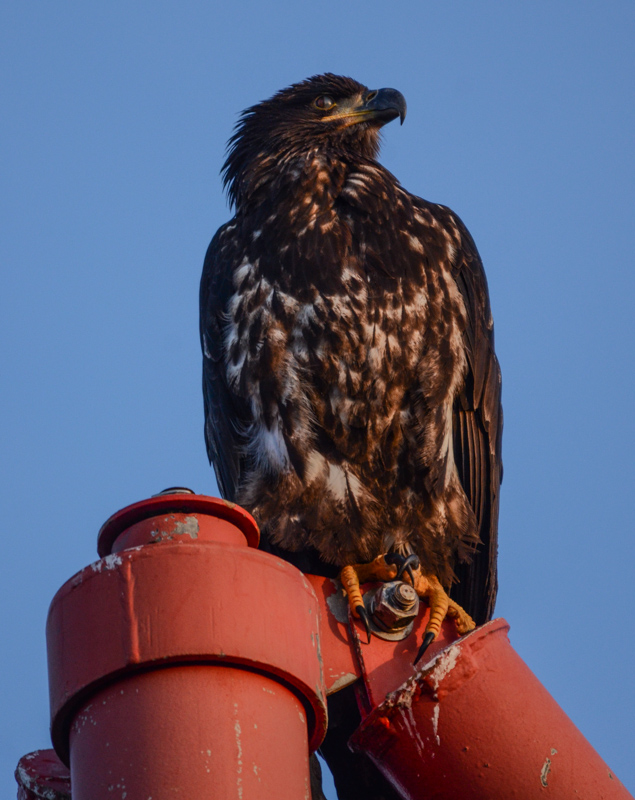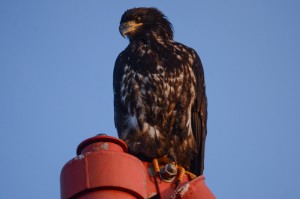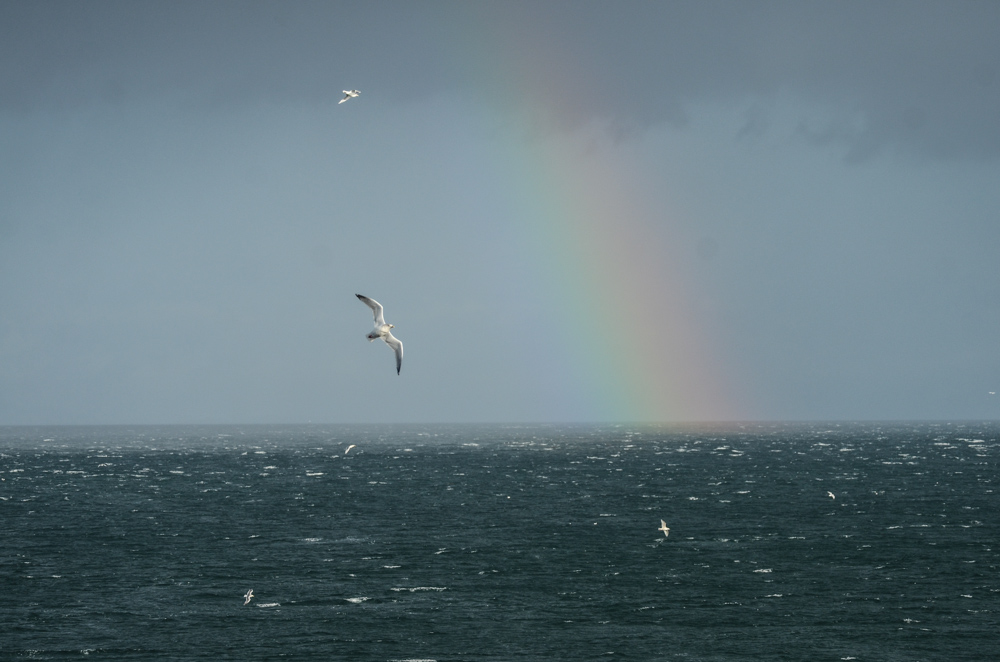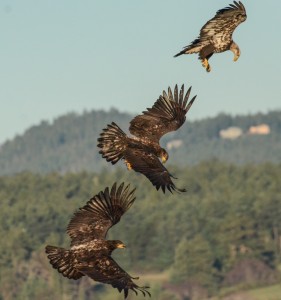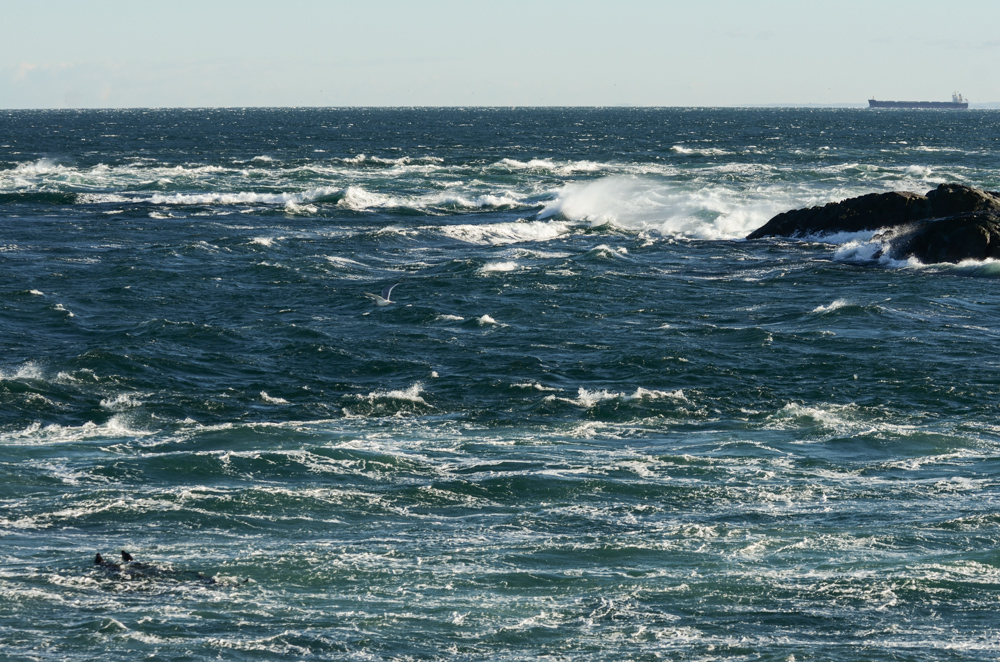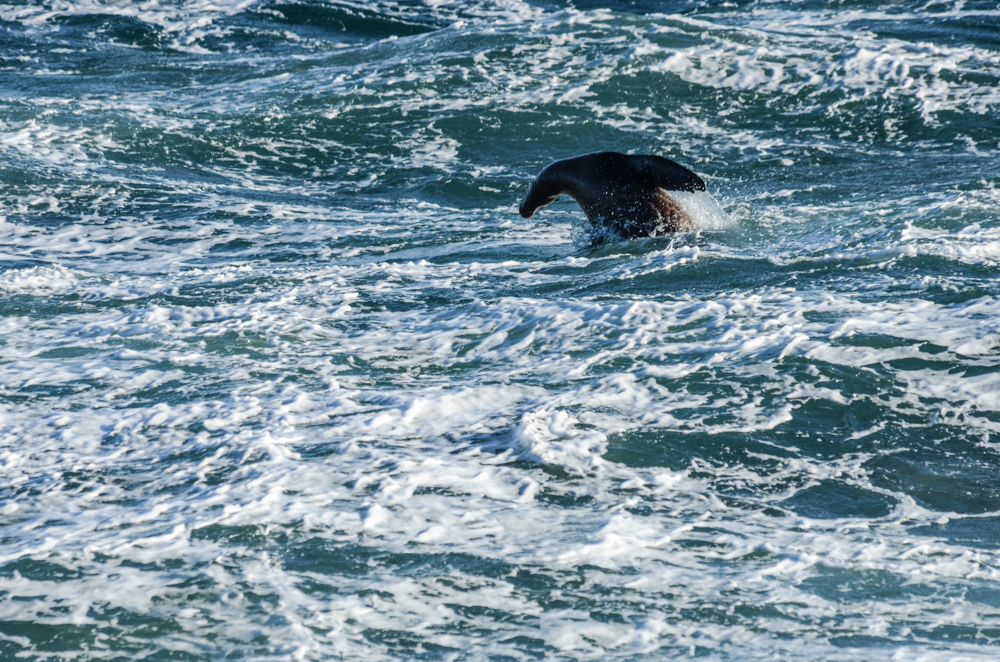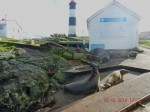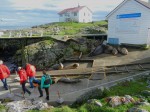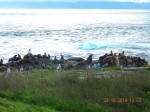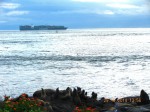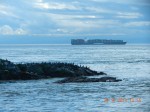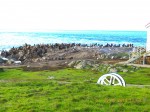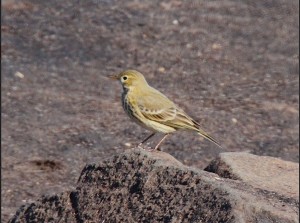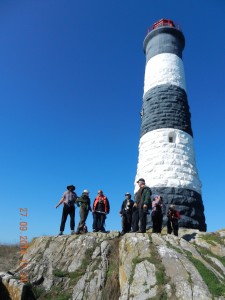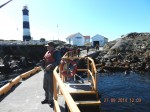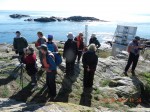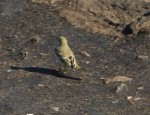Jan 22: Misty, low visibility. Wind N 10-15 knots. 1 private pleasure craft in the reserve. Cut and chopped firewood.
Jan 23: Rain, wind N 10-15 knots. 1 ecotour vessel in the reserve. Followed up with eco tour company I spoke to a couple days ago about one of their boats, distance to mammals and avoiding disturbance. Also called a different eco tour charter company, that I hadn’t seen here before, about distance from mammals and speed in the vicinity of the rocks. Cut and chopped firewood. Could hear elephant seal pup again today.
Jan 24: A blanket of fog rolled in from the North in the morning reducing visibility and triggering fog horn including in the middle of the night. Periods of rain too. Two ecotour vessels in the reserve. Went off island around noon in the fog, navigated by GPS on boat with cell phone as back up. Picked up supplies in Colwood including extra chains, files and lube for the station chainsaw. Brought three guests back out with me in the afternoon to stay overnight. Sea was very calm on the way over and the fog had lifted enough to see to Port Angeles. The fog came back before dusk but lifted overnight.
Jan 25: Cloudy, light rain, light wind. 10-15 orcas passed through race passage going with the current, heading SW. I brought guests back to college around noon. On the way over we passed by elephant seal rock and were able to see the pup with its mother. It was on the West side of the mother, out of sight from the main island or tower cam. Came back out before dark.
Jan 26: Foggy in the morning, fog horn went off during the night. Cloudy throughout day, wind light. 1 ecotour vessel. Cut and chopped wood. Foggy again in the evening.

